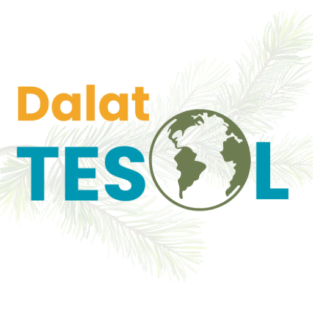By Dalat TESOL
A step-by-step guide for building a compelling rationale and positioning your study
🎯 Why the Introduction Matters
Your Introduction is not just the “first section”—it’s your first impression. Done well, it tells the reader:
- Why this topic matters
- What has already been done
- Where the gap is
- What your study will contribute
In short, a strong Introduction builds a bridge from existing knowledge to your unique research question.
🧱 The Four Essential Moves in a Strong Introduction
You can use the CARS model (Create A Research Space), developed by Swales (1990), which includes four rhetorical moves:
| Move | Purpose | Sample Heading (optional) |
|---|---|---|
| 1. Establish the territory | Show topic importance | (No heading) |
| 2. Review previous research | Show what is known | Literature Background |
| 3. Identify the gap | Show what is missing or underexplored | Research Gap |
| 4. Announce your study | What you did and why | The Present Study |
Let’s break these down with examples.
🪧 Move 1: Establish the Territory (Introduce the Topic)
Begin with a broad opening that introduces your topic and why it’s important. This is where you “hook” your reader.
Example
In recent years, the use of artificial intelligence (AI) in language education has sparked global interest. As educational institutions explore digital tools for teaching and learning, AI-powered applications like ChatGPT have emerged as potential game-changers in writing instruction.
✅ Tip: Use current, relevant trends (e.g., “post-pandemic shifts,” “digital transformation”) to show relevance.
📚 Move 2: Review Prior Research (What Is Known)
Now briefly synthesize what scholars have already said. Don’t list studies one by one—group them thematically and show what has been explored.
Example
Existing research has examined AI in language learning across multiple dimensions, including learner engagement (Teng et al., 2024), writing fluency (Dizon & Gayed, 2023), and academic integrity (Ranalli, 2018). These studies suggest that while AI tools can enhance writing performance, they also raise questions about over-reliance and originality.
✅ Tip: Use present perfect tense (e.g., “Studies have shown…”) to describe the research field.
🕳️ Move 3: Identify the Gap (What Is Missing)
Now highlight what’s not yet understood or explored. Be specific—not “few studies,” but which part is under-researched.
Example
However, relatively few studies have examined how EFL learners in low-resource educational settings engage emotionally and cognitively with AI-assisted writing tools. In particular, there is limited research on how such tools affect students’ self-efficacy and writing anxiety in Southeast Asian university contexts.
✅ Tip: Use phrases like:
- “Little attention has been given to…”
- “Research to date has primarily focused on…”
- “A gap remains in understanding…”
🧾 Move 4: Announce the Present Study
Finally, describe the purpose, approach, and significance of your study. End with research questions or hypotheses if relevant.
Example
This study aims to investigate the impact of ChatGPT use on Vietnamese EFL students’ writing self-efficacy and anxiety. Using a mixed-methods design, we explore both learners’ perceptions and changes in confidence before and after guided AI-supported writing tasks. By focusing on an underrepresented learner population, this study contributes to the growing body of research on AI integration in second language writing instruction.
✅ Tip: Use past tense (“This study aimed…”) if the study has already been conducted; use present tense if it’s a proposal.
📌 Sample Structure Summary
| Section Purpose | Common Content |
|---|---|
| Topic Intro | Broad issue, relevance, trends |
| Literature Review | Synthesis of key findings and debates |
| Gap Statement | What’s missing or underexplored |
| Present Study | Purpose, context, research questions |
🧰 Useful Academic Phrases
| Function | Example Phrases |
|---|---|
| Showing importance | “There is growing interest in…” / “This issue is particularly relevant in…” |
| Reviewing research | “Several studies have examined…” / “Recent research has highlighted…” |
| Pointing to the gap | “However, few studies have explored…” / “A notable gap in the literature is…” |
| Announcing the study | “The present study investigates…” / “This paper aims to…” |
📖 Example Research Questions (for context)
RQ1: How does guided ChatGPT use affect EFL students’ writing self-efficacy?
RQ2: What challenges and benefits do students perceive in using AI tools for academic writing?
You may follow your introduction with these RQs, especially in applied research.
🧠 Final Reminders
✅ Use transitions to guide flow (e.g., “Building on this work…”).
✅ Stay focused: don’t overload the Introduction with too many citations.
✅ End strong: your reader should know exactly what your study is about and why it matters.
📝 Quick Practice Exercise
Take a topic you care about (e.g., pronunciation instruction, AI tools, translanguaging) and try to:
- Write one paragraph introducing the topic
- Write one sentence summarizing the research gap
- Write one sentence stating your study’s purpose
